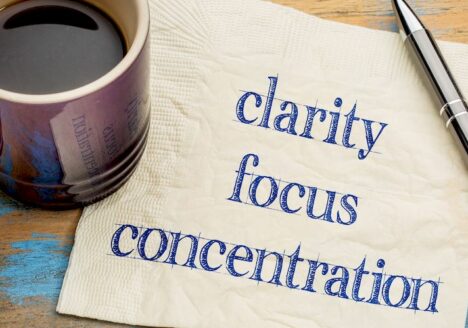Trauma Release Exercises (TRE), developed by Dr. David Berceli, offer a unique approach to addressing trauma and stress stored in the body. Based on the body’s natural tremoring response to trauma, TRE integrates mind, body, and spirit, making it highly compatible with the holistic approach of the Self Matrix framework. This article explores how TRE can be used to promote overall well-being by releasing physical and emotional tension, supporting the Self Matrix’s goal of balancing body, mind, and spirit.
Definition
Trauma Release Exercises are a series of seven physical movements designed to induce neurogenic tremors, a natural tremoring response that occurs during stress or trauma. These tremors, according to Berceli et al. (2014), help discharge pent-up stress and facilitate the body’s ability to heal itself. By engaging the body’s large muscle groups, TRE creates the conditions for the natural release of long-held tension and trauma, promoting overall relaxation and recovery.
History and Origins
Dr. David Berceli, a trauma expert, developed TRE based on his extensive work in conflict zones, where he observed how individuals physically respond to trauma. His understanding of how trauma can be stored in the body led him to design these exercises, which trigger the natural tremoring response to release both physical and psychological tension. Berceli’s approach emphasizes the body’s inherent capacity for healing (Berceli et al., 2014).
Principles and Concepts
The core principle of TRE is the induction of neurogenic tremors, which are seen as the body’s natural mechanism for releasing stress and trauma. These tremors occur when the nervous system activates an involuntary shaking response, often suppressed in modern life. According to “Preliminary results of several small sample studies in Ukraine,” this tremoring can help reset the nervous system, which is essential for trauma recovery (2016). Berceli’s approach is grounded in the idea that trauma, when unaddressed, can manifest in various physical and emotional symptoms, and TRE aims to reverse these effects by fostering the body’s innate healing capacity.
Benefits
TRE offers a wide range of benefits that align with the Self Matrix framework by supporting the integration of body, mind, and spirit. Physically, TRE helps release muscular tension and chronic stress, which are often symptoms of trauma (Berceli et al., 2014). Emotionally, it provides relief from trauma-related symptoms, such as anxiety, fear, and hypervigilance, which are common in individuals with post-traumatic stress disorder (PTSD). Psychologically, it fosters a deeper connection between mind and body, creating a pathway for emotional healing. By restoring balance to the nervous system, TRE supports emotional resilience and mental clarity, reinforcing the holistic aims of the Self Matrix.
Applications
TRE has been applied successfully across different populations to address trauma and stress-related symptoms. Research on non-professional caregivers has shown that TRE can significantly improve quality of life by reducing stress and enhancing emotional well-being (Berceli et al., 2014). Additionally, studies have demonstrated its effectiveness in helping trauma survivors, such as East African refugees, who reported a reduction in trauma symptoms after an eight-week TRE intervention (Parker, 2024). These applications highlight TRE’s ability to alleviate the physical and psychological burdens of trauma.
Scientific Evidence
The efficacy of TRE is supported by a growing body of research. In one study, Berceli et al. (2014) found that self-induced tremors improved quality of life among non-professional caregivers, who often face chronic stress. Another study involving East African refugees revealed that participants experienced a significant reduction in trauma-related symptoms following a TRE program (Parker, 2024). Furthermore, the concept of neurogenic tremors aligns with broader trauma theories, such as those presented in Bessel van der Kolk’s influential work The Body Keeps the Score, which underscores the importance of body-based therapies in trauma recovery (Ray, 2015).
How to Get Started
Beginning with TRE is relatively simple and does not require extensive equipment or prior experience. Individuals can either learn TRE through certified practitioners or follow instructional videos and guides. The exercises involve standing and lying down positions, focusing on the large muscle groups in the legs, pelvis, and lower back. After inducing slight fatigue in these muscles, the body begins to tremor naturally. This response is voluntary and can be controlled or stopped at any time, making it a safe and accessible method for individuals seeking relief from tension and trauma. Regular practice is recommended to maintain the benefits.
Case Studies or Testimonials
A range of testimonials and case studies support the positive impact of TRE. For example, in a study of non-professional caregivers, participants reported significant improvements in their emotional well-being and stress management after incorporating TRE into their routines (Berceli et al., 2014). Similarly, Parker’s (2024) study on East African refugees demonstrated a clear reduction in trauma-related symptoms, illustrating TRE’s effectiveness in even the most severe cases of trauma. These cases offer anecdotal and research-based evidence of TRE’s potential to transform lives.
Conclusion
Trauma Release Exercises (TRE) provide a powerful and natural method for addressing the physical and psychological effects of trauma. By facilitating the release of long-held tension and trauma through neurogenic tremors, TRE supports the Self Matrix framework’s focus on the integration of body, mind, and spirit. The research-backed benefits of TRE make it a valuable tool for promoting overall well-being, reducing trauma-related symptoms, and fostering a deeper connection between the mind and body.
References
Berceli, D. (2005). The Revolutionary Trauma Release Process: Transcend Your Toughest Times. Namaste Publishing.
Berceli, D. (2013). Shake It Off Naturally: Reduce Stress, Anxiety, and Tension with TRE. Trauma Recovery Services.
Berceli, D., Salmon, M., Bonifas, R., & Ndefo, N. (2014). Effects of self-induced unclassified therapeutic tremors on quality of life among non-professional caregivers: a pilot study. Global Advances in Health and Medicine, 3(5), 45-48. https://doi.org
Parker, J. (2024). The effect of tension and trauma releasing exercises (TRE) on trauma symptoms in East African refugees. Psychology, 15(01), 77-91. https://doi.org
Ray, A. (2015). The body keeps the score: brain, mind, and body in the healing of trauma. The Permanente Journal, 19(3). https://doi.org
(2016). Preliminary results of several small sample studies in the Ukraine, during TRE trainings on different levels. Psychological Counseling and Psychotherapy, (6). https://doi.org
.




